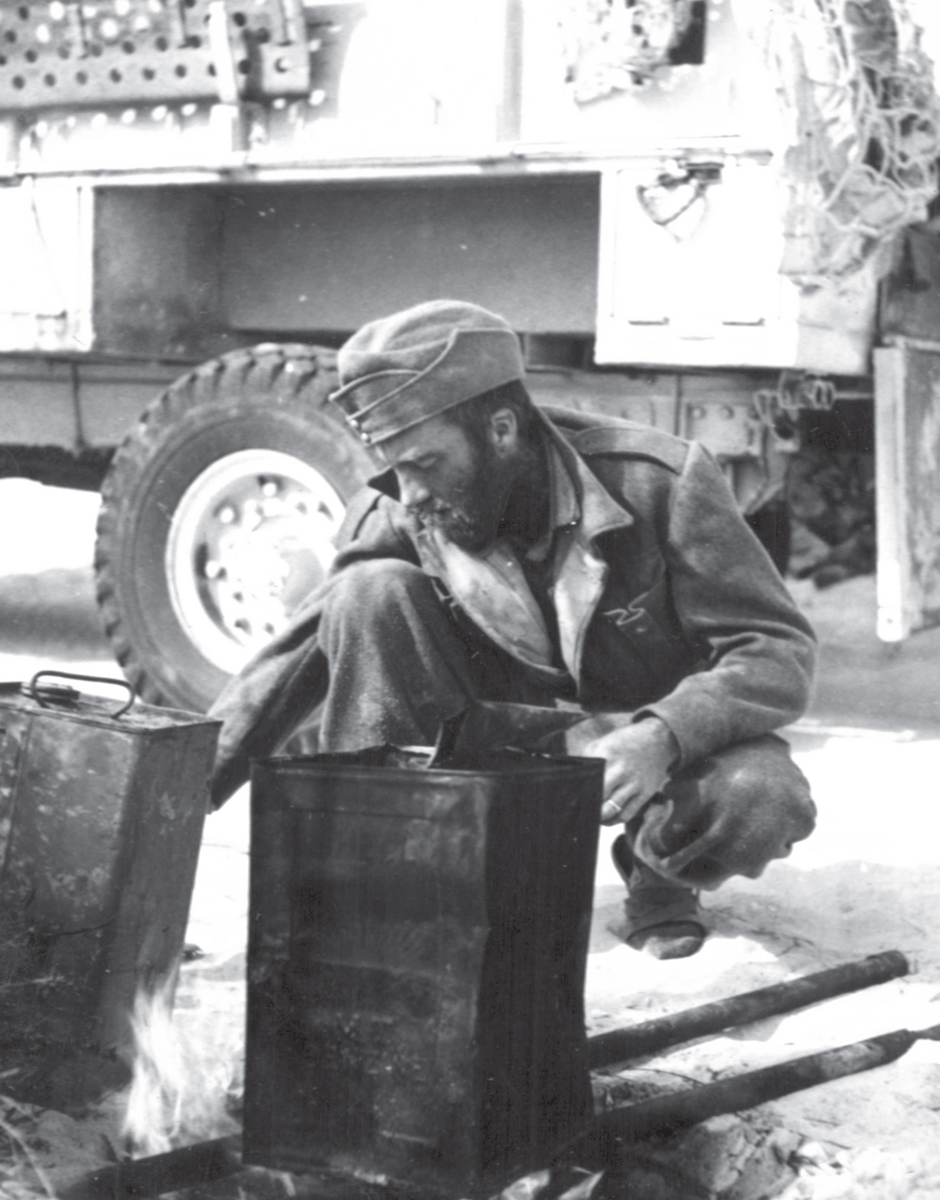
Benny Watson brews up using a ‘Benghazi burner’, a fuel can filled with sand and petrol. (Courtesy of the SAS Regimental Archive)
CHAPTER 4
EXPANSION AND EXCITEMENT
The LRDG was expanding, but with British soldiers and not New Zealanders. General Freyberg, upon returning to the Middle East from England, was as ‘wild as anything’1 when he discovered some of his finest troops had been purloined by the British. Storming into Wavell’s office, the New Zealander was told that the men were making his country proud ‘and would stay’. A furious Freyberg cabled the New Zealand government in protest and eventually a compromise was agreed whereby the New Zealanders would be ‘replaced gradually’ by British soldiers. But nonetheless Bagnold was now faced with the problem of recruiting soldiers able to withstand the demands of the LRDG. As he noted in the war diary: ‘Owing to chronic shortages in officers and other ranks in the Middle East, unit and formation commanders were very loath to part with men of the high standard required for the peculiar and exacting work which the Long Range Patrols existed to do.’

Benny Watson brews up using a ‘Benghazi burner’, a fuel can filled with sand and petrol. (Courtesy of the SAS Regimental Archive)
While Bagnold and Kennedy Shaw embarked on a recruitment campaign among the infantry depots of the Middle East, W, T and R Patrols sortied once more into the desert to conduct operations between Kufra and Jalo, approximately 300 miles to the north. A force of some 700 Italians had been garrisoned at Jalo for a number of years, their HQ in the oasis’s fort, outside which was a native village. The water in Jalo was brackish and unlike other desert oases there were no pools in which to bathe. Additionally, the air was not just fetid, it was black with the flies attracted by the latrine pits and, in some cases, the human faeces that lay uncovered in the hot sun.
Frank Jopling had trouble getting to grips with their destination, describing the places to his diary as ‘Koofra’ and ‘Jarlow’. He was more sure of their mission, once Captain Clayton had briefed the patrol. ‘We are going to find a narrow part of the road and put some mines down and we are going to look for the most likely alternative route where they would most likely go after they found out that the road was mined, and lay some more there,’ he wrote.2
Jopling sensed there was a ‘bit of excitement’ as the patrol headed into the desert. It would be a short mission – Clayton promised they would be back on 7 November – and this time they had orders to actively seek out and engage the enemy. T Patrol was accompanied by Captain Steele’s R Patrol, along with an undesignated patrol of four trucks commanded by Bill Kennedy Shaw, but Teddy Mitford’s W Patrol had been disbanded, with the men returned to their New Zealand regiments.
In recognition of the more aggressive nature of the operation, Clayton’s truck was armed with a Vickers K machine gun, a gas-operated weapon that could fire up to 1,200 rounds a minute. It was far superior to the obsolescent Lewis Gun and gave the patrol confidence.
The going was variable as they headed west. They covered 120km in two hours on the morning of 28 October over what Clayton described as ‘the best going God made’. The next day they spent wearying hours digging out vehicles from the hot, liquid sand, but on All Hallows’ Eve they were chilled by ‘a strong icy wind’. To make life more uncomfortable, Clayton for the first time forbade the lighting of fires because they were very near Italian positions. Jopling and his pals rigged up a tarpaulin as a wind breaker and huddled together for warmth round the primus stove.
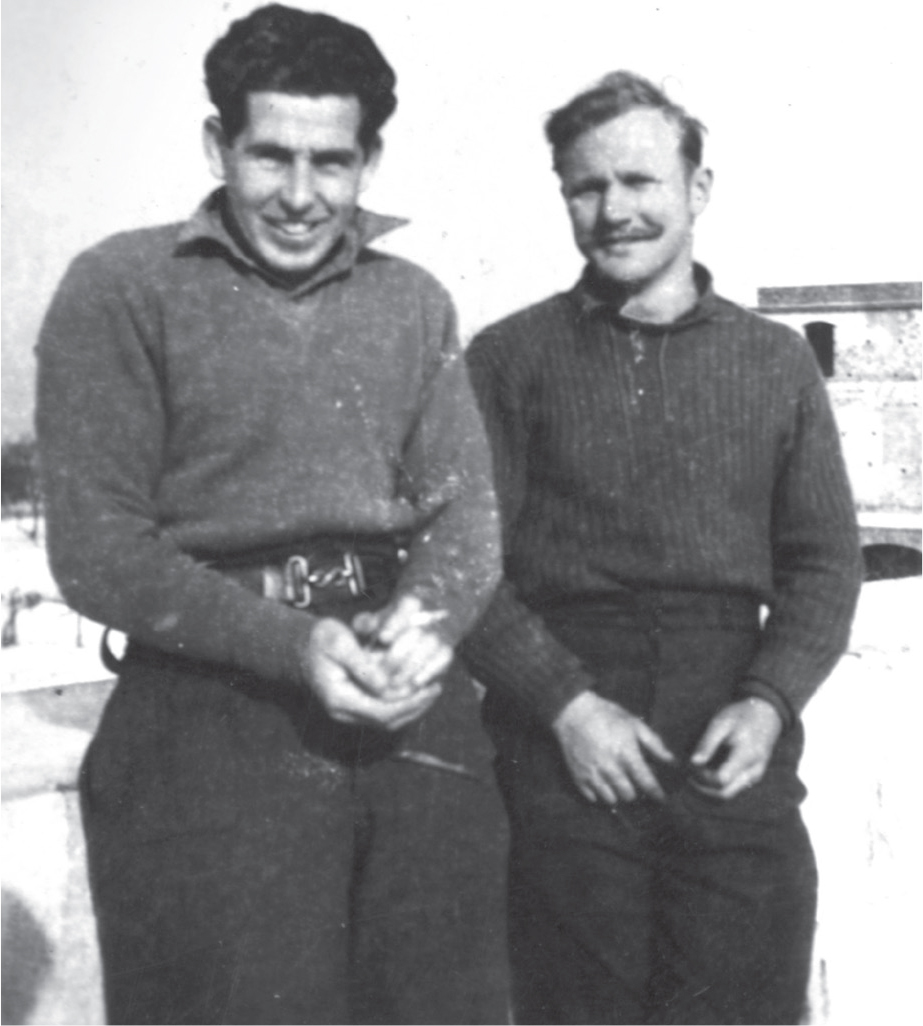
Lt Cecil ‘Jacko’ Jackson, right, was the Rhodesian officer responsible for taking many of the photos in this book. (Courtesy of the SAS Regimental Archive)
The men were up early the next morning, 1 November, sheathed in their greatcoats and cap comforters. The bitter cold followed them north, and by 7am they were only 60 miles from the Libyan coast. Clayton considered it a good place to sew some mines on the road. Transport travelled frequently along this route, and what’s more, Clayton told the men, the Italians would likely think the mines had been laid by a raiding party that had arrived by boat and struck inland.

An LRDG vehicle is bogged down in the mud after a desert storm. (Courtesy of the SAS Regimental Archive)
With the mines concealed in the road, the LRDG headed west, then turned south, towards the oasis at Aujila. The men were on a heightened state of alert as they began to see more and more tyre tracks. There was a fort as well as an oasis at Aujila but they did not know the strength of the garrison. They mined the approach to the oasis, recorded Jopling in his diary:
And the captain, having given the signal to start up, had just started to move forward, when a Native soldier came over the ridge giving the Italian salute, thinking we were an Italian colonel and his escort, or something. As soon as he got close to the truck, Clarrie Roderick who was on the truck fixed his bayonet and jumped off the truck, pointing rifle and bayonet at the soldier, who nearly dropped with fright, but managed to raise his hands above his head.
The captain first put him on his truck but afterwards put him on mine. He informed us that there were five men in the fort but only two soldiers, both Italian Sgts.3
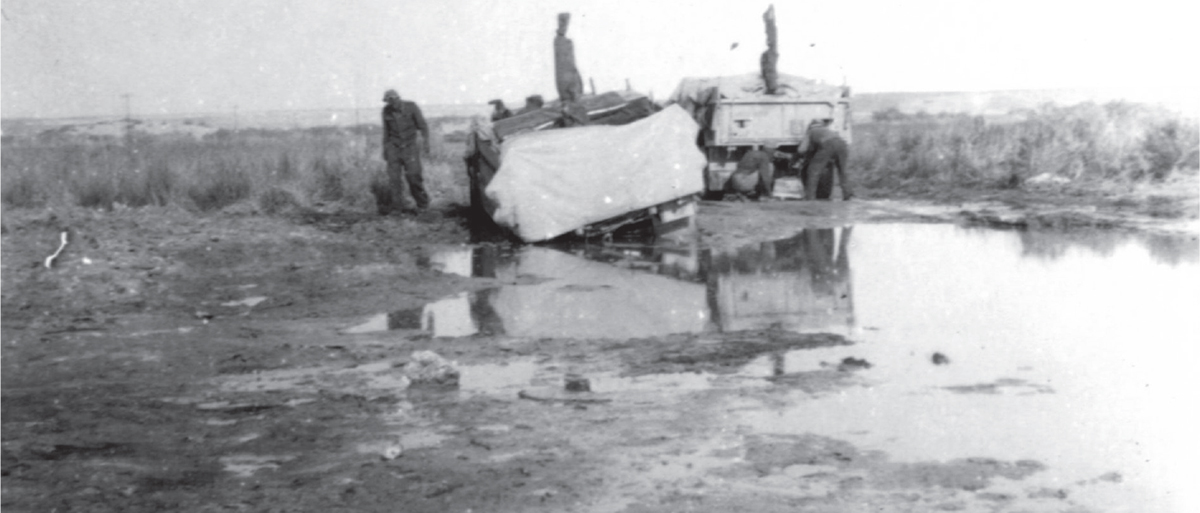
It didn’t rain often in the desert but when it did the terrain could quickly become a sea of mud. (Courtesy of the SAS Regimental Archive)
Furnished with the information, Clayton led his patrol to the top of the rise overlooking the fort and on his signal, the LRDG blazed away with rifles, Vickers, Bofors and Boys anti-tank rifles. ‘Believe me,’ reflected Jopling, ‘I wouldn’t care to have been in the Fort while the bombardment was on. We fired 7 shells with the Bofors gun and every one was a hit.’*

Captioned ‘With our prisoners’, this photo was taken in September 1941. (Courtesy of the SAS Regimental Archive)
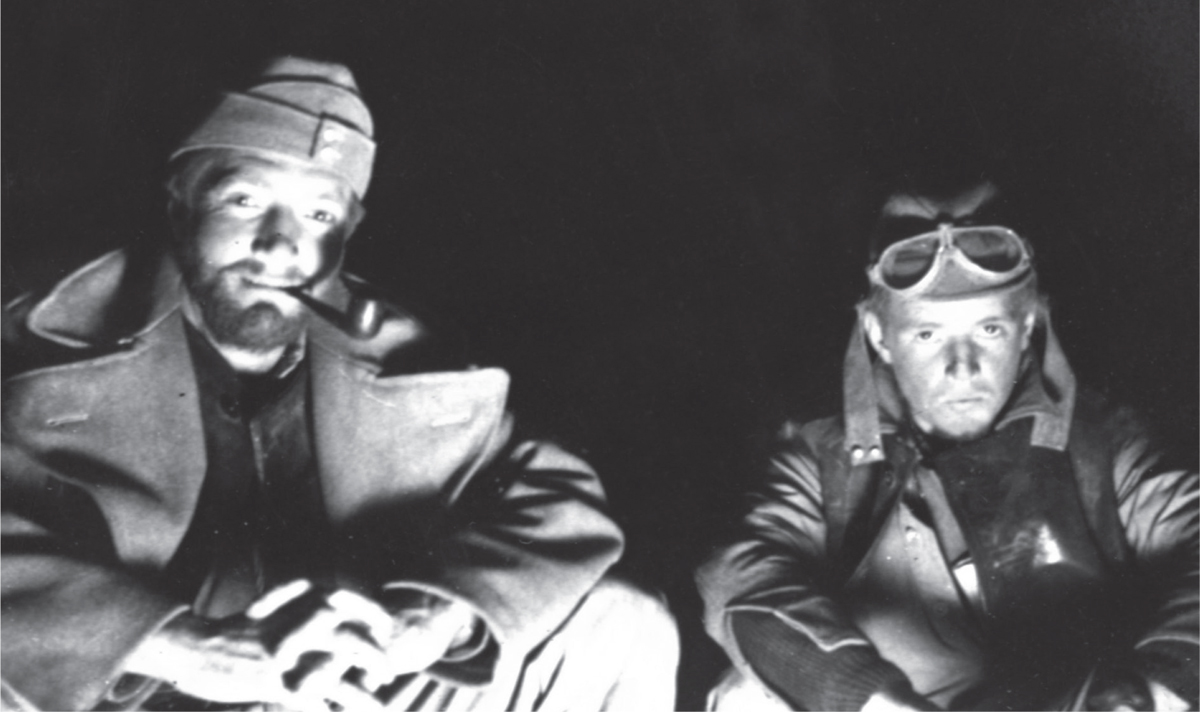
Ron Low and Ken Low around a campfire, somewhere in Libya, October 1941. (Courtesy of the SAS Regimental Archive)
As the intensity of the fire eased, the fort gates were flung open and out ran five terrified figures in the direction of the native village situated nearby. Clayton didn’t pursue them; he had the prisoner requested by Bagnold, and he was anxious not to dawdle in an enemy location. He did, however, allow his men a few minutes to look inside the fort, where the LRDG discovered a couple of machine guns and a number of swords, two of which were seized as souvenirs.
R Patrol, meanwhile, under the command of Don Steele, had also been busy mining roads, in their case in the vicinity of Uweinat. On 31 October they had come across an Italian dump containing 75 18kg bombs, 640 2kg bombs and ten drums of petrol, each one with 44 gallons of precious fuel. Kennedy Shaw recalled that Steele, ‘who always liked playing with explosives, had a day out’. And his day wasn’t finished. Later in the afternoon, on a landing ground west of Ain Zuwaia, R Patrol destroyed an Italian Savoia-Marchetti, a three-engined bomber, along with 160 drums of petrol.
As well as the destruction of the bomb dump and aircraft, and the sacking of the fort, the LRDG patrol was notable for its co-operation with the Royal Air Force (RAF). From 28 October to 4 November, a Vickers-Valentia from No. 216 Squadron, crewed by six airmen and also carrying Captain Mitford and Captain Frank Edmondson, the medical officer, was at their disposal. It was fitted with long-range tanks and fuel had been cached by the LRDG at three dumps prior to its first flight, which, as Jopling proudly told his diary, was the first time an aircraft had flown over the Great Sand Sea. Disconcertingly, however, added the New Zealander, ‘the plane followed our tracks at an altitude of 600ft and spotted our trucks 15 miles away, which shows that our camouflage isn’t very effective’.

Two LRDG soldiers prepare to get a small fire going at the end of a day’s patrolling. (Courtesy of the SAS Regimental Archive)
However, overall the experiment achieved mixed results. Resupply by air had proved useful materially and psychologically to the LRDG, but the aircrew had been dependent on the patrol for water as there hadn’t been space in the aircraft for their own supply. Additionally, the fuel dumped by the LRDG prior to the mission had only just proved sufficient. When the Vickers-Valentia touched down at Heliopolis on 4 November, after flying a total of 1,900 miles in 24 hours and 40 minutes of flying time, the aircraft had one hour’s fuel left in the tank. Nonetheless Bagnold, ever the innovator in desert travel, believed air transport had great potential for the LRDG.
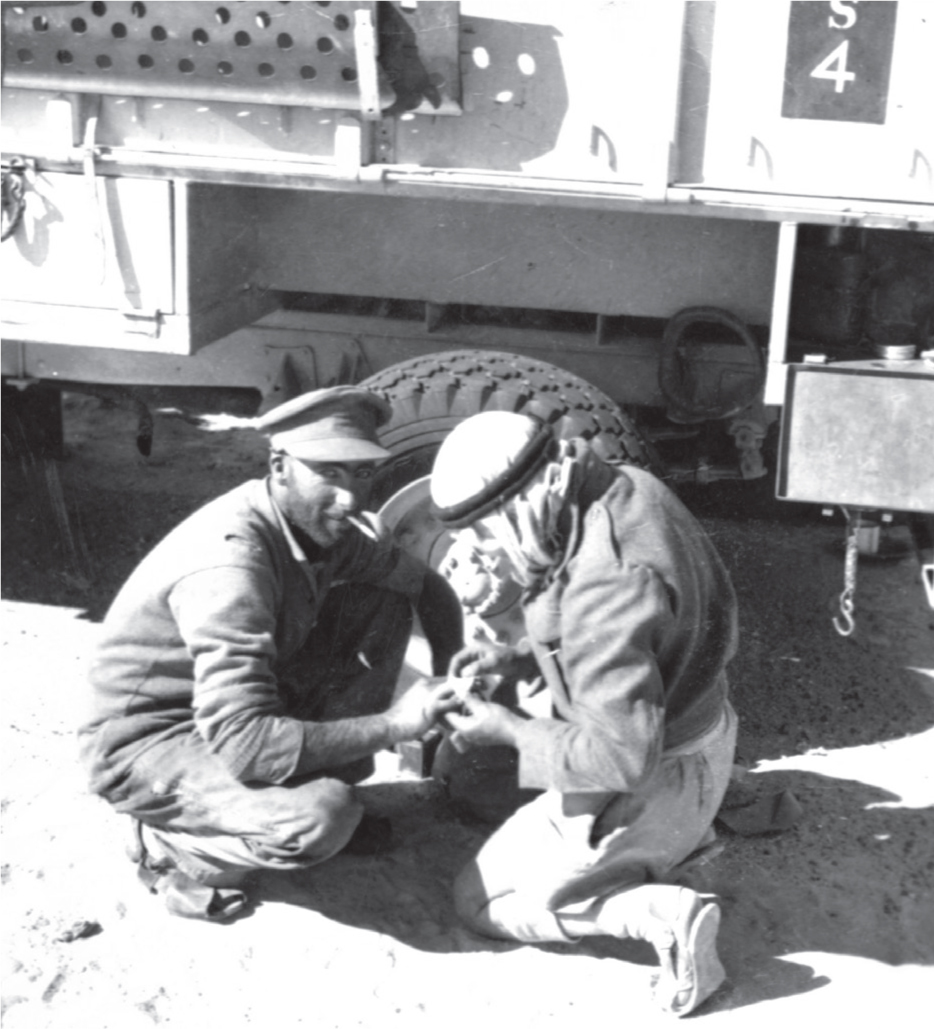
Watson and Noble of S1 Patrol on the road from Hon to Misurata, September 1941. Note that Noble is wearing the Arab headdress, Kafiya which, while it kept out sand, was prone to getting entangled in equipment. (Courtesy of the SAS Regimental Archive)
T Patrol arrived back on 6 November, having covered 2,100 miles in total, 24 hours earlier than Clayton had promised before they set out on their mission. Once more the men were a sight for sore eyes as they drove into their barracks at Abbassia. ‘A stranger meeting a LRDG patrol returning … would have been hard put to decide to what race or army, let alone to what unit, they belonged,’ wrote Kennedy Shaw. ‘In winter the use of battledress made for some uniformity, but in summer, with a month-old beard thick with sand, with a month’s dirt, skin burnt to the colour of coffee, and clad in nothing but a pair of torn shorts and chapplies, a man looked like a creature from some other world.’4
Chapplies were the sandals adopted by the British Army on the North West frontier, and which proved far more practical in the desert for everyday living than boots, which quickly filled with sand. As for headgear, the LRDG had experimented first with the topee (also called a pith helmet) and then the Arab headdress, or kafiya. Both proved impractical, the topee because so many were crushed ‘beneath a case of rations or a gun magazine and were reduced to pulp’ and the kafiya because, though it was excellent at keeping out sand, it was uncomfortable in hot weather and prone to get tangled in the engine or the weapons. Instead, the men of the LRDG found that what was most practical and also offered the best protection was the cap comforter, a garment which looked like a short scarf but could be worn as woollen hat. Then later on in the war the peaked cap of the Afrika Korps, complete with neck shield, became a firm favourite.
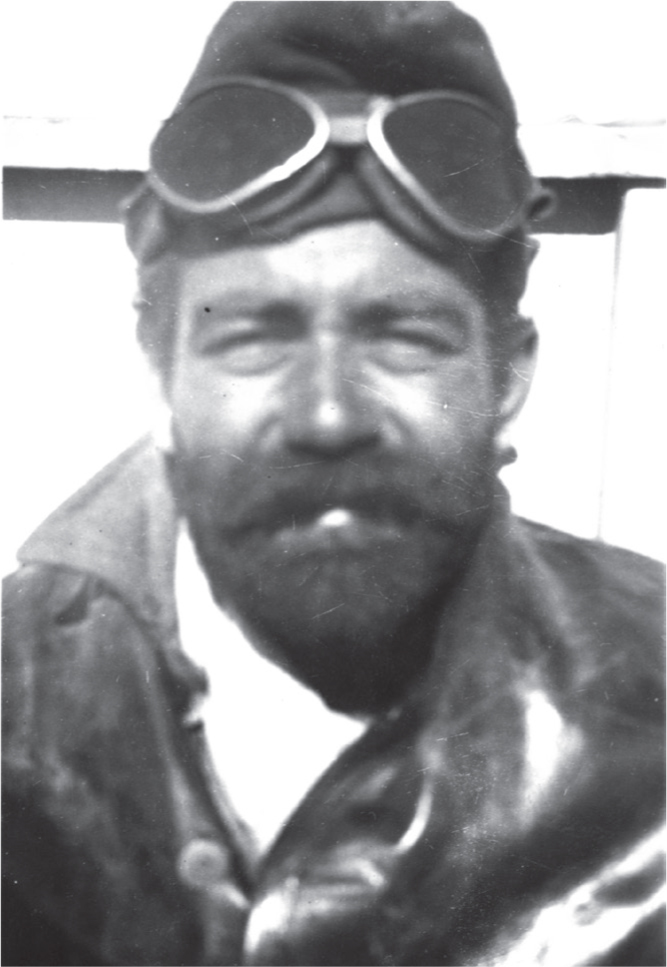
Goggles, such as this pair worn by John Kroeger, were vital for drivers on desert patrols. (Courtesy of the SAS Regimental Archive)
Five days after T Patrol returned, Wavell, having pored over the intelligence reports, wrote to Bagnold telling him the LRDG’s work ‘is most valuable and shows skill and enterprise of a high order’. Wavell had already sent the intelligence to London, explaining that owing to the LRDG’s information the Italians were compelled to divert troops and vehicles from the main battlefield in the north to deal with the guerrilla attacks in the south. He had also highlighted that, because of the LRDG’s aggressive patrolling between Kufra and Uweinat, the Italians would be increasingly unlikely to launch an attack on the Nile from this area.
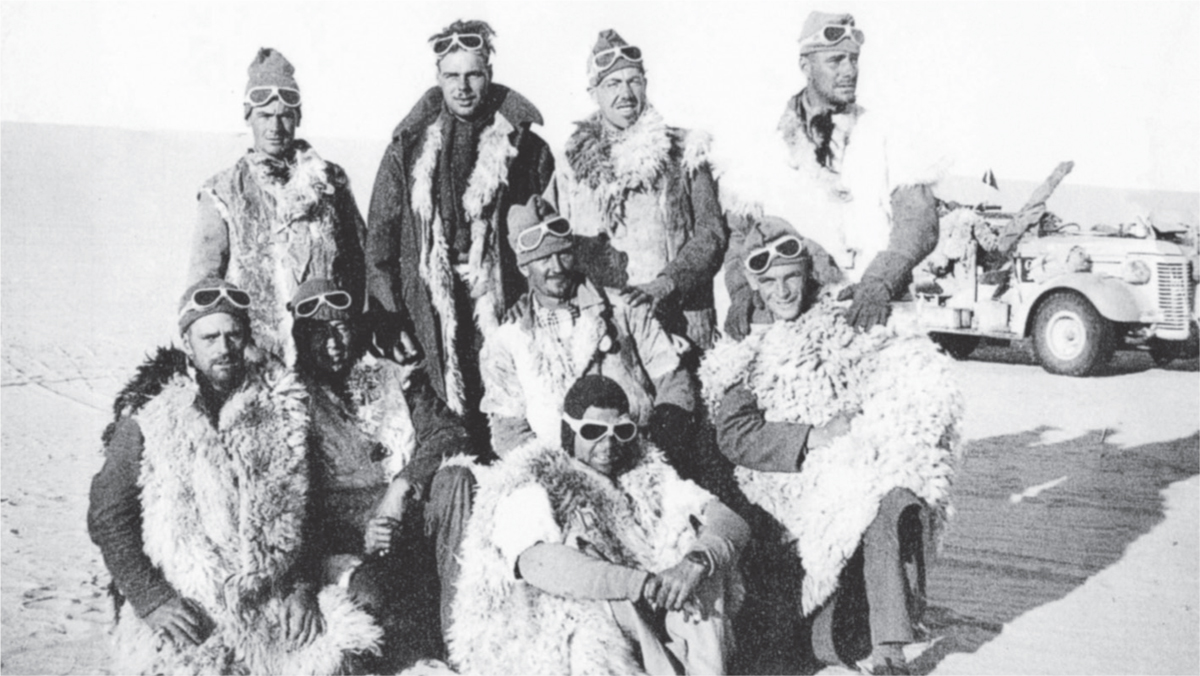
Members of G Patrol shortly after their formation in late 1940, possibly on their way to attack Murzuk with Captain Pat Clayton in January 1941. (Courtesy of Jack Valenti)